-
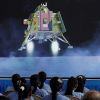 +36 +8
+36 +8India's space ambitions bolstered by historic moon landing | CBC News
Indians already saw their space program as a point of pride even before the historic soft landing near the moon's unexplored south pole Wednesday, but the success of the mission is expected to spark a renewed confidence and increased investment in India's growing space sector.
-
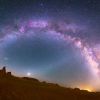 +34 +3
+34 +3You'll travel nearly a trillion miles in your lifetime, even if you never leave home. Here's how.
Everything in the universe is moving, and fast.
-
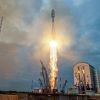 +31 +5
+31 +5Mission to the Moon: Who will win Russian and India's race to the lunar South Pole?
Two spacecraft – one built by India and the other by Russia – are hurtling on missions towards our Moon by very different routes. Does it matter which will win?
-
 +29 +7
+29 +7Planetary defense test deflected an asteroid but unleashed a boulder swarm
A UCLA-led study of NASA’s DART mission determined that the strategy presents previously unanticipated risks.
-
 +30 +6
+30 +62-faced white dwarf star surprises astronomers
A daily update by email. Science news, great photos, sky alerts.
-
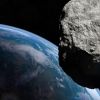 +21 +4
+21 +4A skyscraper-size asteroid flew closer to Earth than the moon — and scientists didn't notice until 2 days later
A stealthy asteroid the size of a 20-story building hid in the sun's glare before zooming uncomfortably close to Earth on July 13. Scientists didn't notice until July 15.
-
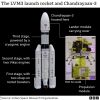 +12 +3
+12 +3Chandrayaan-3: India's historic Moon mission lifts off successfully
With Chandrayaan-3, India aims to be the first to land near the Moon's little-explored south pole.
-
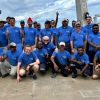 +24 +6
+24 +6Alien technology? Harvard professor finds fragments that could be of otherworldly origin
An astrophysicist at Harvard University believes he may have found proof of extraterrestrial life not by studying the vast night sky, but by combing the bottom of the Pacific Ocean. Last month, a crew aboard a boat called the Silver Star embarked on an expedition to Papua New Guinea with the mission of recovering fragments from a mysterious meteor that had crashed into Earth in 2014.
-
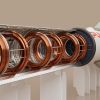 +38 +6
+38 +6Pulsar Fusion wants to use nuclear fusion to make interstellar space travel a reality
Space propulsion company Pulsar Fusion has started construction on a large nuclear fusion chamber in England, as it races to become the first firm to fire a nuclear fusion-powered propulsion system in space. Nuclear fusion propulsion tech, arguably a golden goose of the space industry, could reduce the travel time to Mars by half and cut the travel time to Titan, Saturn’s moon, to two years instead of 10. It sounds like science fiction, but Pulsar CEO Richard Dinan told TechCrunch in a recent interview that fusion propulsion was “inevitable.”
-
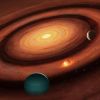 +4 +1
+4 +1Cosmic 'sandwich' theory could explain how smaller planets are formed
"Sandwiched planet formation" may arise as the result of gas and dust being squeezed between large planets.
-
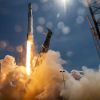 +2 +1
+2 +1What's next for Europe's Euclid 'dark universe' telescope after stunning SpaceX launch?
A new space observatory is flying across the void after a dramatic launch atop a SpaceX rocket Saturday (July 1), but its journey has just begun. The European Euclid space telescoe began its long journey to deep space on a SpaceX Falcon 9 rocket at 11:11 a.m. EDT (1511 GMT) from Cape Canaveral Space Force Station on Florida's Space Coast.
-
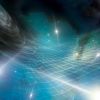 +30 +6
+30 +6For first time ever, scientists "hear" gravitational waves rippling through the universe
"We're starting to open up this new window on the universe," one astrophysicist said.
-
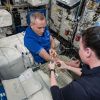 +3 +1
+3 +1Why do some people get rashes in space? There's a clue in astronaut blood
A new study of astronaut blood finds that space travel reduces the expression of 100 genes related to the immune system.
-
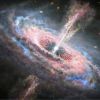 +13 +2
+13 +2In a first, JWST detected starlight from distant galaxies with quasars
Until JWST’s sharp infrared eyes came along, it wasn’t possible to see the galaxies hosting extremely bright supermassive black holes called quasars.
-
 +30 +4
+30 +4We could see the glint off giant cities on alien worlds, suggests paper
How large would an extraterrestrial city have to be for current telescopes to see it? Would it need to be a planet-sized metropolis like Star Wars' Coruscant? Or could we see an alien equivalent of Earth's own largest urban areas, like New York City or Tokyo?
-
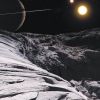 +16 +3
+16 +3We Live in the Rarest Type of Planetary System
A planetary system is shaped at the boundary of order and chaos. It starts out as a molecular cloud—a big, cold clump of mostly hydrogen gas that can collapse to make stars. As central stars form, the remainder of the cloud flattens into a whirling protoplanetary disk that weaves together worlds from turbulent swirls of gas, ice and dust. From there larger-scale chaos can ensue as bigger planets push smaller ones around.
-
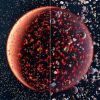 +21 +5
+21 +5Where did Earth get its water? It was sucked up from space, new theory says
The theory could have important implications for the search for life outside the solar system.
-
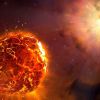 +4 +1
+4 +1The mysterious behavior of this Supergiant star hints at an impending supernova, new study
The bright, red star Betelgeuse in the constellation Orion has shown some unexpected behaviour.
-
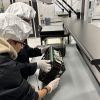 +25 +5
+25 +5Space mining startup CEO says asteroid resources can save the planet
Resources that are finite on our planet "are abundant in the universe," AstroForge CEO Matt Gialich told IE in an interview.
-
 +15 +6
+15 +6NASA Says There May Be Life on the Moon After All
NASA researchers say Moon astronauts should consider that microbial life could survive in shadowed niches near the south pole.
Submit a link
Start a discussion




















